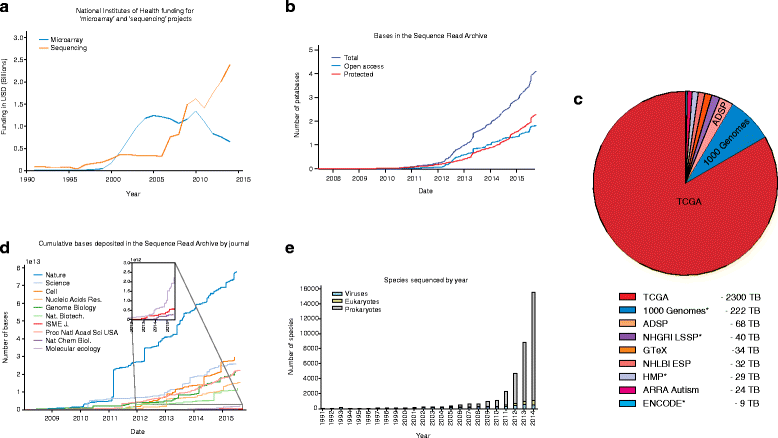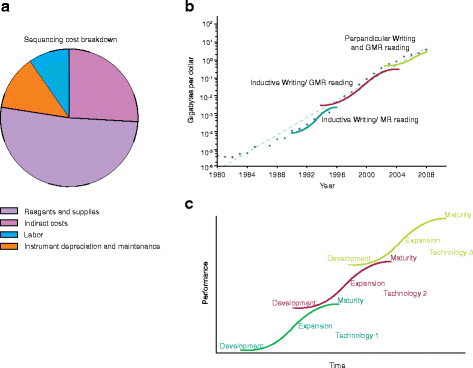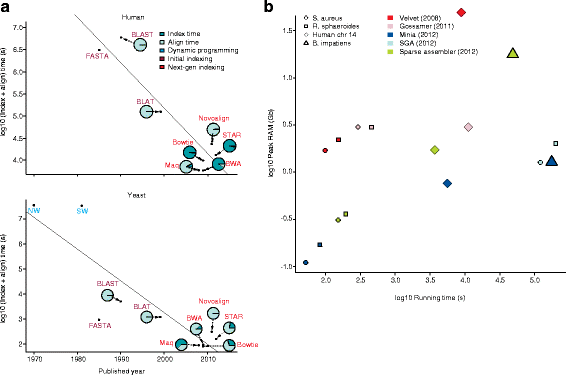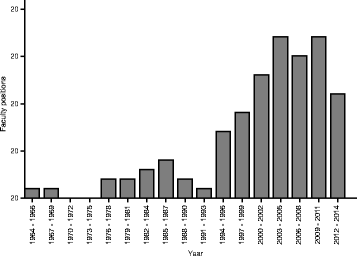The real cost of sequencing: scaling computation to keep pace with data generation
- PMID: 27009100
- PMCID: PMC4806511
- DOI: 10.1186/s13059-016-0917-0
The real cost of sequencing: scaling computation to keep pace with data generation
Erratum in
-
Erratum to: The real cost of sequencing: scaling computation to keep pace with data generation.Genome Biol. 2016 Apr 28;17:78. doi: 10.1186/s13059-016-0961-9. Genome Biol. 2016. PMID: 27125642 Free PMC article. No abstract available.
Abstract
As the cost of sequencing continues to decrease and the amount of sequence data generated grows, new paradigms for data storage and analysis are increasingly important. The relative scaling behavior of these evolving technologies will impact genomics research moving forward.
Figures




References
-
- Stevens H. Life out of sequence : a data-driven history of bioinformatics. Chicago: The University of Chicago Press; 2013.
Publication types
MeSH terms
Grants and funding
LinkOut - more resources
Full Text Sources
Other Literature Sources
Research Materials

